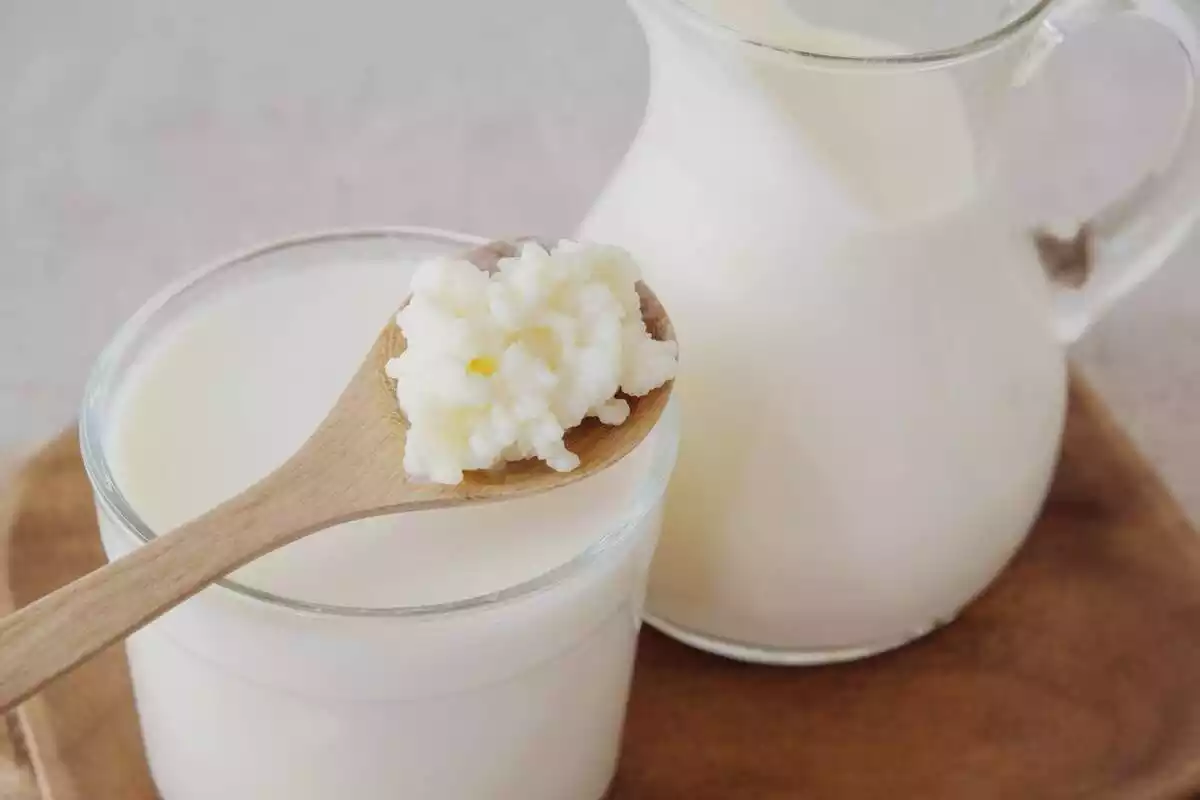Probiotics have many applications, benefits, and properties. These microorganisms are used to promote health and proper body function in general.
In this article, we explain what probiotics are and what probiotic foods are out there, along with the main benefits of consuming foods that contain them. Also, we describe how they are different from prebiotics.
What are Probiotics?
Probiotics are live microorganisms that benefit intestinal function if taken correctly. These microorganisms are non-pathogen bacteria (single cell organisms that do not cause illnesses) and also a type of yeast, known as Saccharomyces.
These bacteria are also sometimes used to refer to a nutritional regimen based on the consumption of probiotic foods and dietary supplements. Most of these are produced for human consumption in the form of dairy products that contain two types of microbes: lactobacilli and Bifidobacterium.
Just like royal jelly, probiotics are now available in the form of facial creams and other similar cosmetic products.
In the 90s, public interest in probiotics grew for the first time. Many studies established the clinical importance of lactobacilli and Bifidobacterium in improved lactose absorption, diarrhea treatment in children, and in the fight against recurring vaginal candidiasis.
Lactobacillus reuteri, a Swedish product proven to fight rotavirus diarrhea in children (a virus transmitted via feces), used by the yogurt brand Stoneyfield, and Saccharomyces boulardii, a yeast product available in capsules, that effectively stops antibiotic-related diarrhea, are two strains sold in the United States that have proven benefits.
Prebiotics vs probiotics
A prebiotic refers to certain foods that back up the viability of the probiotic microorganisms, promoting their proliferation.
These are substances cannot be digested and stimulate the growth of beneficial bacteria. Prebiotics are sometimes naturally occurring, but they can also be added to foods.
Prebiotics are not living microorganisms but instead simple substances that promote the growth of non-pathogen bacteria found in our bodies, that form a part of our intestinal flora.
Some examples of prebiotic foods include Fructooligosaccharides (Fructooligosaccharides or sugars derived from fruits that are resistant to digestion), and galactooligosaccharides (galactooligosaccharides), sugars in foods that contain galactose, like goat milk.
Probiotic foods
Some examples of probiotic foods are kombucha, miso, pickled foods, sauerkraut, and dairy products like yogurt and kefir. However, most people that recommend probiotics use dietary supplements in powder and capsule form. Some of these products are milk based, while others are non-dairy.
Lactobacillus GG, Lactobacillus acidophilus, Lactobacillus bulgaricus and, Bifidobacterium bifidum are the most commonly recommended bacteria for consumption. The last one, Bifidobacterium bifidum, is the best bacteria for children. Mother’s milk also contains nutrients that foster the growth of Bifidobacterium.
These supplements are to be taken with mineral water and not with broth or juice since these stimulate the secretion of stomach acids that destroy beneficial bacteria.
These foods often impact the volume and frequency of bowel movements, which increases the elimination rate of certain medications. Therefore, if you start taking these beneficial bacteria, the dose you take may need to be adjusted.
Some people that use this nutritional remedy recommend cleaning the lower digestive track with an enema or a colon treatment before starting a cycle of probiotic supplements. However, using these could also be highly recommendable after colon cleansing.

Benefits of probiotics
Probiotic bacteria exercise their effects when they colonize surfaces, like those found in the intestinal tract or the vagina. These materials can also be produced by adherent bacteria that are the inhibitors for other kinds of bacteria.
The overall effect of these processes isthe competitive exclusion of potentially harmful bacteria due to the beneficial probiotic bacteria.
Below we describe the foods and supplements recommended as a form of treatment for a variety of health conditions, ranging from exclusively digestive tract related issues to general health problems.
Intestinal disorders
Generally speaking, probiotic organisms have been proven useful in treating intestinal disorders like colitis, so-called “traveler’s diarrhea”, acute non-bacterial diarrhea, rotavirus diarrhea, irritable bowel syndrome, and the overgrowth of bacteria in the small intestine involved in gastric ulcers.
Lifestyle diseases
Probiotics also have applications outside of the treatment of intestinal disorders. These natural foods could effectively treat a wide range of chronic conditions that are believed to be caused by intestinal dysbiosis (poor intestinal health caused by toxic build-up or leaky gut syndrome).
This imbalance is attributed to a combination of diets high in protein, stress, environmental contamination, and allopathic medicinal products.
Some alternative doctors insist that many illnesses and disorders are directly related to intestinal dysbiosis or that they could at least benefit from treatment with probiotics.
On this list, a few mental health conditions stand out, as well as chronic fatigue syndrome, muscle pain, some autoimmune disorders, lactose intolerance, certain infectious diseases, high blood pressure, high cholesterol, menopausal problems, vaginosis, kidney stones, allergies, and asthma.
References
Frey, R., & Nelson, K. E. (2005). Probiotics. In J. L. Longe (Ed.), The Gale Encyclopedia of Alternative Medicine (2nd ed., Vol. 3, pp. 1646-1651). Detroit: Gale.
Probiotics (2003). In B. W. Lerner & K. L. Lerner (Eds.), World of Microbiology and Immunology (Vol. 2, p. 450). Detroit: Gale.
